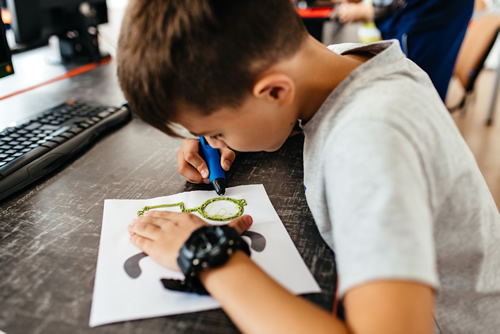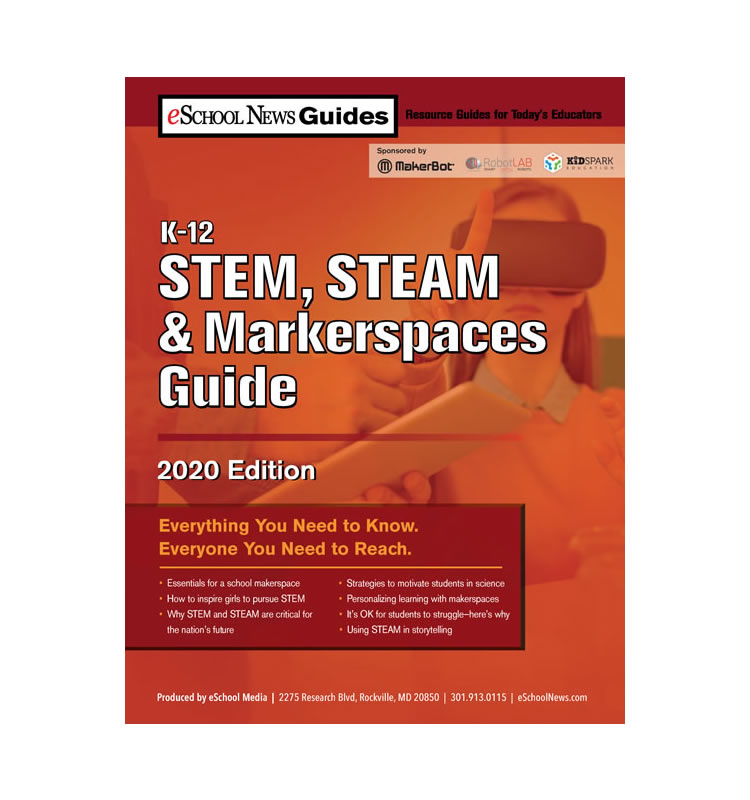Picture your last trip to the grocery store. The aisles are filled with options- too many really. For example, selecting a carton of eggs might take a little more time than it used to. You have cage-free, vegetarian, organic, pasture-raised, and even eggs enhanced with Omega-3 fatty acids. Scientists call this phenomenon “choice-overload,” and it can lead to us swearing off eggs forever. In my experience visiting hundreds of classrooms and thousands of students, many teachers are faced with a similar feeling when starting their instructional transformation with STEM or STEAM.
Related content: How STEM learning invigorates classrooms
As a teacher-leader and STEAM Innovator in Santa Rosa County, FL for the good part of the last decade, I have made some incredible observations that can undoubtedly help every teacher transform their instructional practice and better prepare their students from kindergarten to career.
Here are five ways to immediately integrate STEAM into classroom instruction:
1. Connect with an industry expert or professional.
Here’s some precious wisdom for students: “You can’t be what you can’t see.” One of the best ways to awaken a child’s future is to show them the possibilities. Don’t just say, “You can be anything.” Students need examples, interactions, and experiences that will provide context for future opportunities.
Related Content:
eSchool News STEM, STEAM, & Makerspaces Guide
The eSchool News STEM, STEAM, & Makerspaces Guide is here! It features strategies to help you integrate STEM, STEAM, and makerspace education into classrooms, and it offers a look at how these tools engage students and give them valuable skills. A new eSchool News Guide will launch each month–don’t miss a single one!
You can ignite passion and drive enthusiasm by connecting your classroom with experts in-person or virtually. To this point, I rely on two resources in particular: Skype in the Classroom and Discovery Education’s Virtual Field Trips, which can be found in Discovery Education Experience. Both fantastic resources allow you to search for connections and virtual experiences by topic, grade-level, and even by various careers and industries. All in all, Virtual Field Trips are my “go- to” when I want to immerse my students in an unforgettable learning experience that will take them far- beyond the walls of their classroom.
2. Know WHY your standards are meaningful.
Imagine having an answer for that age-old question: “Why do I need to know this %$#?” Okay, so maybe the conversation is not actually that harsh, but students’ tone can pretty well communicate the sentiment. Nevertheless, the best reply to this terrific- kid is an authentic response articulating the job-skills and career opportunities related to that standard.
Roll the tape! “Students, after today’s lesson, our goal is to be able to explain how an author develops the point of view of the narrator or speaker in a text.”
Terrific Kid: “Mrs- I mean Mr. K… When will I ever have to do this in real-life?
Mr. K (STEAM teacher): “Perhaps, you could use these skills to trace someone else’s personal experiences to determine why they may have certain opinions or beliefs…” Almost like a judge- placing themselves in the shoes of the accused in order to determine an appropriate sentence.
As a teacher who has answered this question many times, I will say that one of my favorite resources is STEM Connect by Discovery Education. This resource provides challenges, model-lessons, and more to make your teaching purposeful. The best part is that it eliminates the need for teachers to create lessons on their own. The heavy lifting has been done for us, so we can get some precious time back to teach.
3. Let students struggle.
Not for punishment, but, because you care. Be a learning facilitator and force students to take individual responsibility. At the same time, support student collaboration. Allow them to utilize technology as a resource and encourage students to ask their peers before their teacher. Also, require your students to teach each other. This model is a much more accurate representation of their future workplace.
4. Imagine your classroom as a professional workplace.
Organize your students into purposeful groups that model a professional hierarchy. Compartmentalize classroom responsibilities by creating student-groups that are responsible for unique tasks that require real-world skills.
For example, I may organize my classroom of 20 high school students into 4 collaborative groups of 5 individuals in each group. Moreover, Group 1 (Intelligence) may be responsible for researching and communicating intel to Group 2 (Design Team), which is responsible for designing a plan to execute a task guided by group 1’s research/expertise. From there, Group 2 collaborates with Group 3 (Consultation services), which provides feedback to Groups 1 and 2 on the progress so far. In the meantime, Group 4 (Management) may be responsible for administrative tasks such as recording ideas, securing supplies, monitoring behavior, and providing support as needed.
The beauty about this Henry Ford-inspired student-centered learning is that you can change your group members by the day or week. It is as easy as: “Next Monday, Group 2 will be the new design team.”
As an added level of engagement, I use Canva.com to create free professional-looking company badges that students can proudly don. Not only are kids excited to feel official, the badges also serve to identify which group or team they are in for the time being. On the back of the badge, I may list soft-skills required for this group to have success or provide real-world examples of where this type of team may fit into corporations like Boeing, Microsoft, or IBM.
5. Be creative and flexible with assessments.
Dare to be different. Make the leap and you and your students will feel inspired by all the ways kids can show you that they really know what you’re teaching them. For example, replace a traditional ‘matching’ vocabulary test in a fourth- grade classroom. Instead of students drawing a line on a worksheet from a keyword to its rigid definition, allow students to describe the vocabulary term in their own unique way. One phenomenal way to incorporate this strategy is to simply ask open-ended questions such as, “What does the word mean?” Some creative responses may include metaphors, pictures, synonyms, correct sentence usage, memes (yes, memes), artwork, short stories, photographs, claymation, or faux social media posts. As a superstar- STEAM- teacher, rely on clearly -defined rubrics (I use this tool to create my own) to accurately measure student- proficiency while providing flexibility and creativity for the performance task. In this example, the student could score up to 25 points in four categories: 1. Clear communication 2. Accuracy 3. Support & Development and 4. Creativity. As a bonus, I find that I can commonly recycle these custom rubrics across many topics and assessments or performance tasks.
In the end, we’ve all walked away from the egg aisle a little unsure if we made the right purchase, wondering, “Should I have gone for the free-range brown organic?” The truth is, you have to know which type of egg is best for you. Ultimately, the best egg is the one that satisfies your hunger.
So, whether you call it STEM (Science, Technology, Engineering, & Math), STEAM (Science, Technology, Engineering, Arts, and Math), or even STEM (Students and Teachers Energizing Minds), use these 5 methods to satisfy your students’ curiosity by serving up real world practice, right-now in the classroom.
- Motivating students using the Self-Determination Theory - April 17, 2024
- Michigan Virtual’s statewide workgroup releasing AI guidance for K-12 educators - April 17, 2024
- 5 obstacles AI can help schools overcome - April 16, 2024


